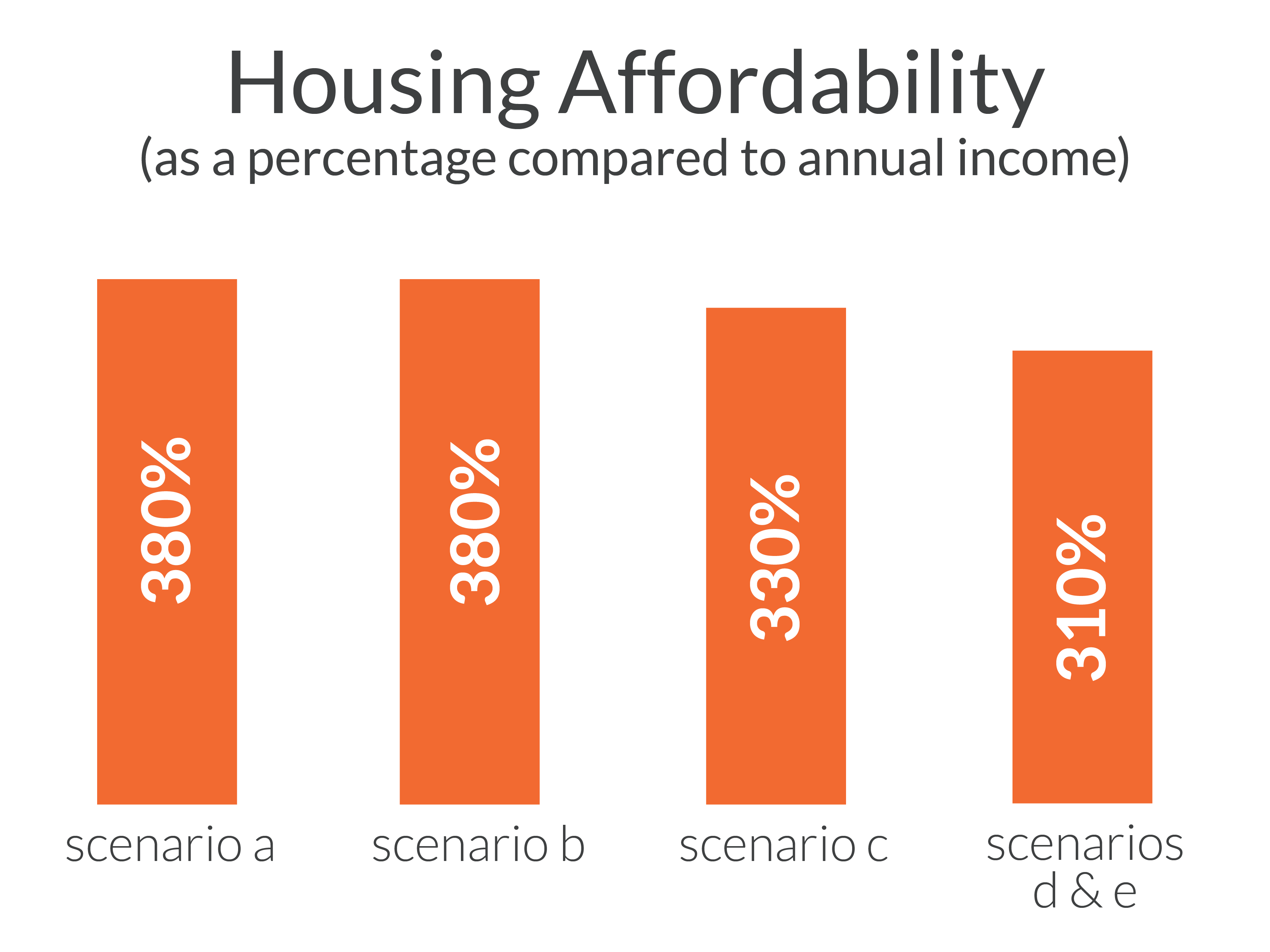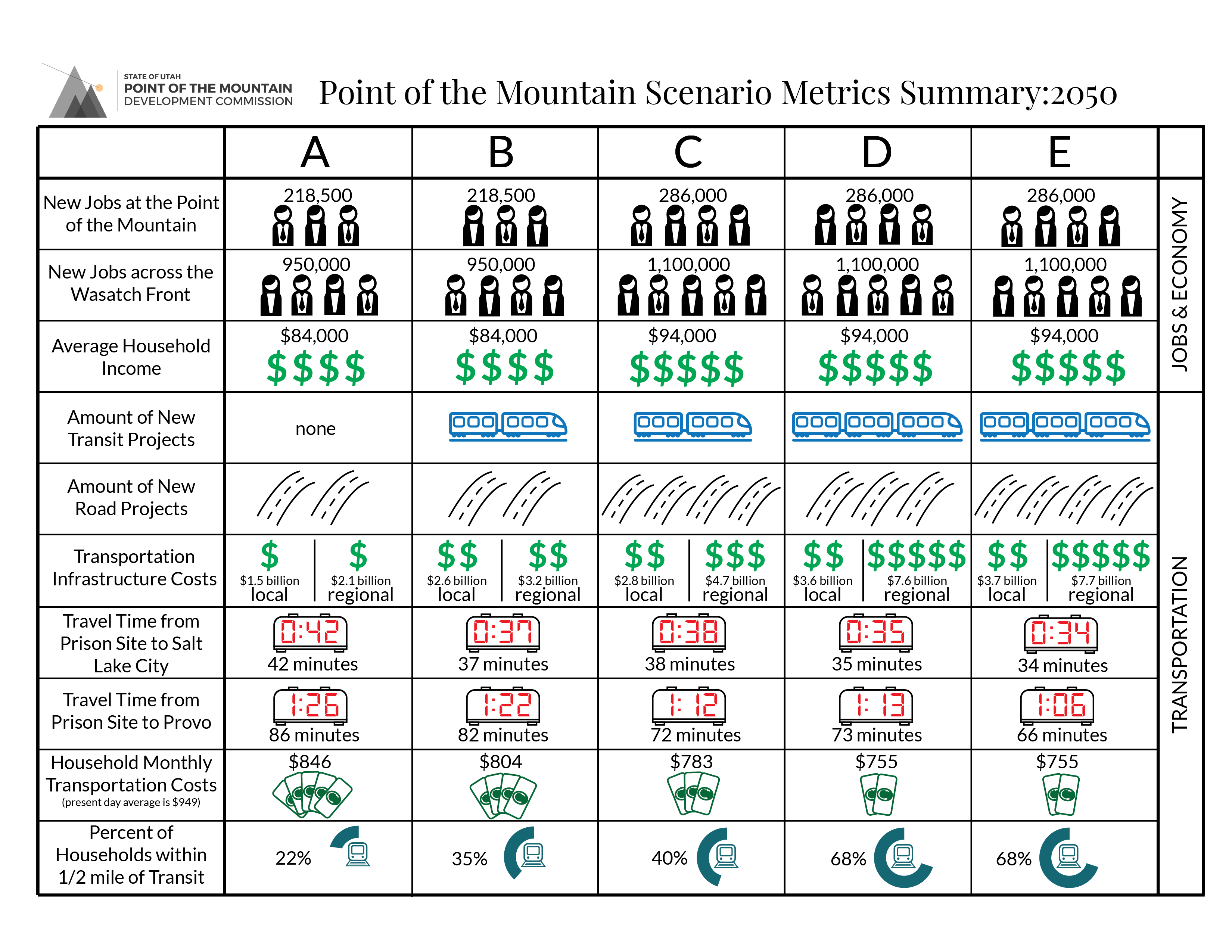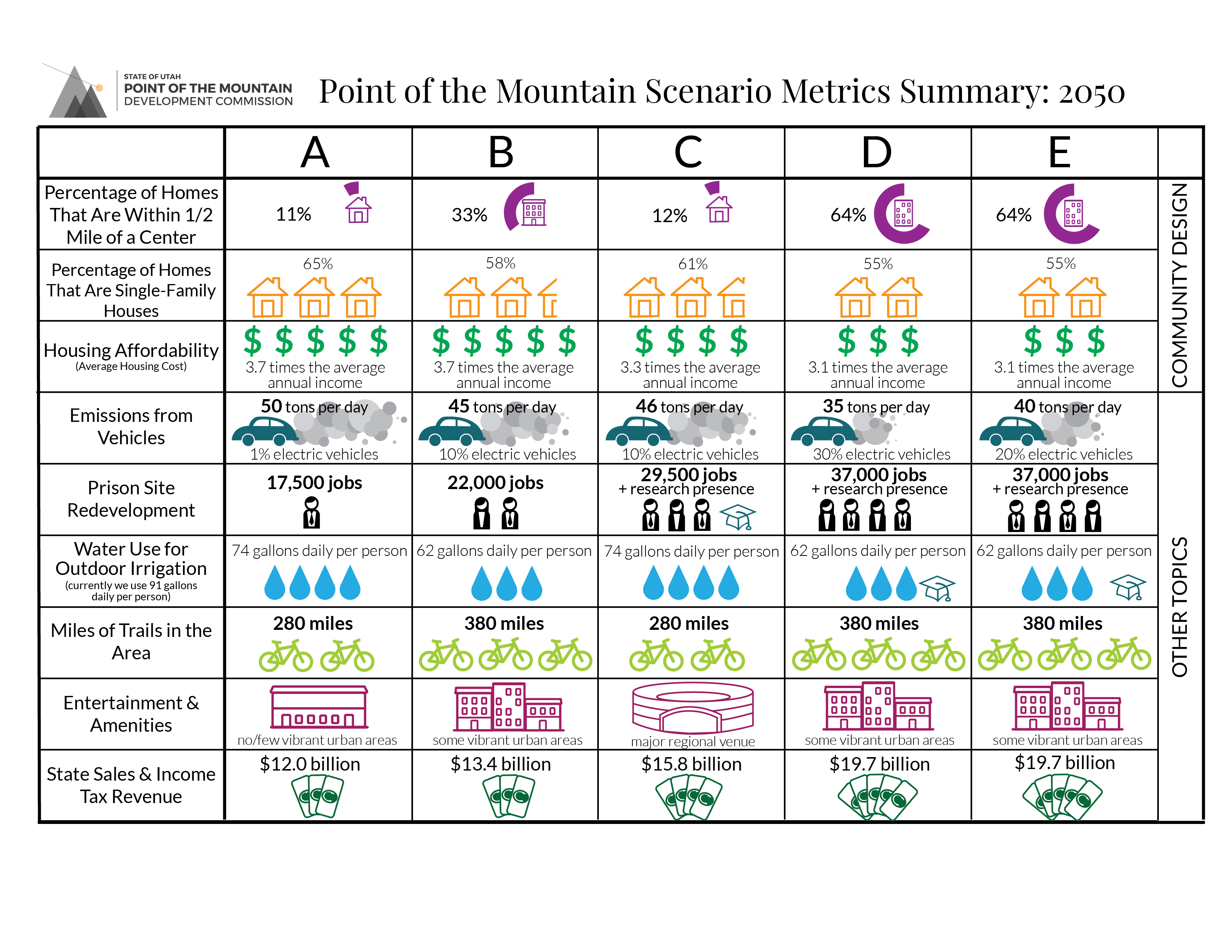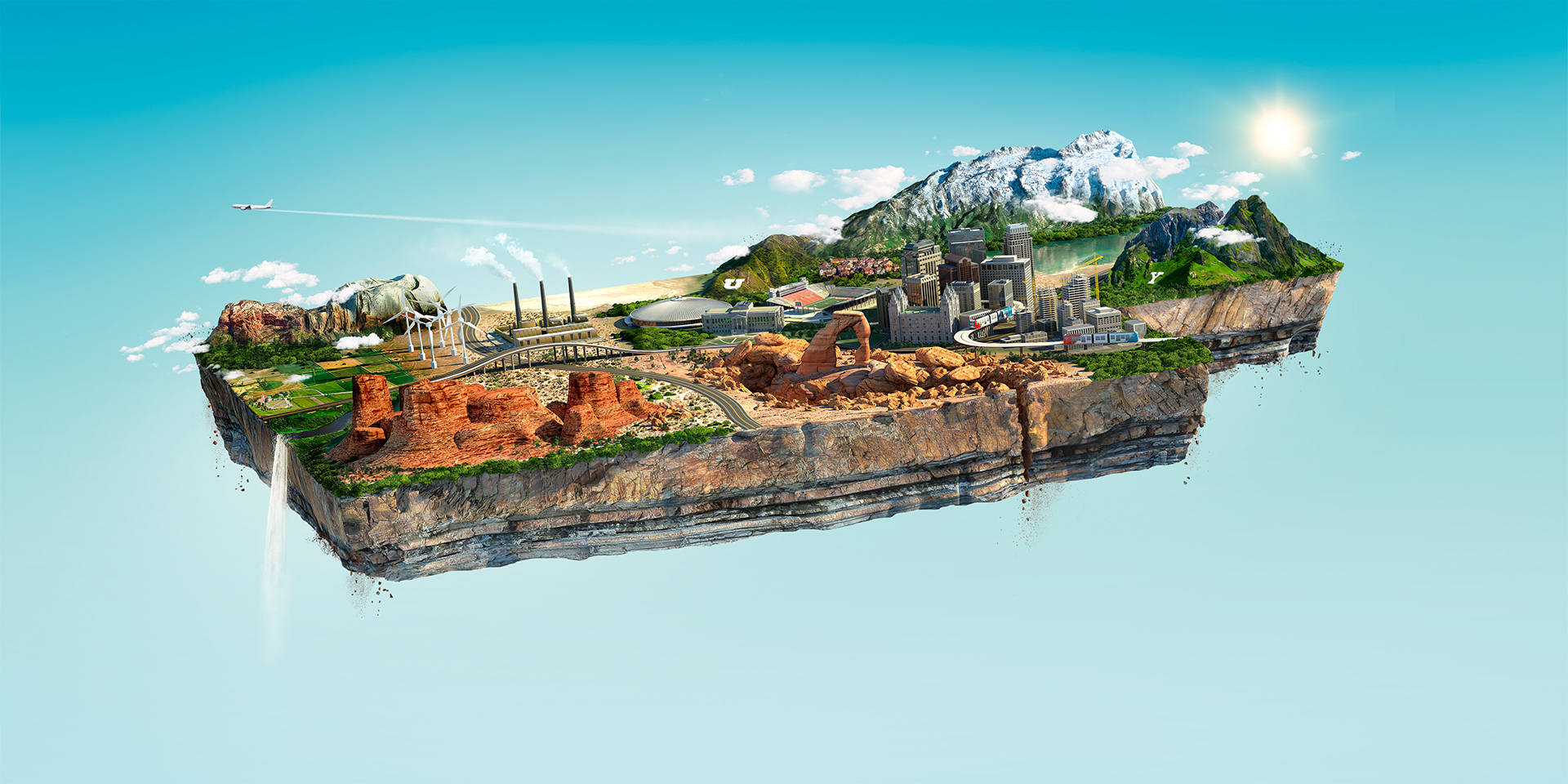The Story
Catalyzed growth in high-paying jobs results in additional growth. Development patterns follow recent post-recession trends. About 43% of new housing built in the Point of the Mountain area is single-family homes, which when added to current housing leads to a total of 61% single-family homes. Additional jobs and growth also locate in other places along the Wasatch Front, and the Point of the Mountain area does not accommodate all its projected growth, so significant additional land is converted to homes and businesses in places far from existing job centers, such that many people drive longer distances.
Commercial areas and job cores are designed to be accessed conveniently by car, with large parking lots, but are difficult to access by foot or by bike.
CLICK HERE TO WATCH A SHORT FLY-OVER VIDEO COMPARING THE SCENARIOS


Results
- 43% of new homes at the Point of the Mountain are single-family detached, 16% are townhomes/duplexes, and 40% are apartments/condos.
- 61% of total homes at the Point of the Mountain are single-family detached, 39% are townhomes, apartments, or condos.
- Although housing costs increase, housing is more affordable than today because of increased incomes (an average new home costs $375,000, about 3.3 times the average income). It is difficult to find a place to live that is close to work.
- 12% of households are within a 1/2 mile of a center with daily services.
- 8,200 acres of additional development happens in places like Eagle Mountain because it isn’t accommodated at the Point of the Mountain.







